The Ten Best Science Books of 2022
From a detective story on the origins of Covid-19 to a narrative that imagines a fateful day for dinosaurs, these works affected us the most this year
:focal(800x602:801x603)/https://tf-cmsv2-smithsonianmag-media.s3.amazonaws.com/filer_public/9e/69/9e69df77-49cc-47ac-8d24-8650e0e50d80/science-booklist-v1.jpg)
This year in science was filled with amazing discoveries, sobering stats related to mounting illness and death from viruses, and major technological achievements in space. Researchers discovered lost cities in the Bolivian Amazon after flying over the rainforest. Mpox (formerly known as monkeypox) spread around the United States, while global deaths from Covid-19 topped six million. And the James Webb Space Telescope unfolded to capture breathtaking images of our universe. In between the breaking news stories, we dug into longer works on a variety of fascinating scientific disciplines. From those, our editors and contributors have picked ten favorites that explore our universe through the lens of creatures ranging from a tiny virus to a dedicated anthropologist to extinct dinosaurs. For a deep look into reproductive anatomy or a memoir connecting music to physics, check out some of Smithsonian magazine’s favorite science books of 2022.
An Immense World: How Animal Senses Reveal the Hidden Realms Around Us by Ed Yong
In An Immense World, science journalist Ed Yong dives into the vast variety of animal senses with a seemingly endless supply of awe-inspiring facts. As humans, we move through the world within our Umwelt—a term for subjective sensory experience Yong borrows from the Baltic German biologist Jakob von Uexküll. But every creature on Earth has its own Umwelt that we can scarcely imagine. Through interviews with scientists around the globe, Yong teases out the astonishing details of other animals’ perceptions, introducing us to their fantastic Umwelten. Scallops, for example, have up to 200 eyes with impressive resolution, but their brains are likely not complex enough to receive and process such crisp images. Some butterflies can perceive ultraviolet color patterns on their wings that distinguish them from other species. And hammerhead sharks have receptors that scan the seafloor for the electric fields emitted by hidden prey, “as one might use metal detectors,” Yong writes. But many creatures’ senses have been thrown off by human activity, he notes. For example, our visually centered society has erected artificial lights that disorient migrating birds and hatchling sea turtles.
The book does not belittle our visual abilities compared to animals that see a wider range of colors, nor does it hold humans in higher esteem for our sensory triumphs, such as having an exacting sense of smell. An Immense World is about diversity, not superiority. Perhaps, though, in imagining what other creatures experience, we are creating an experience that’s uniquely our own. As Yong writes, “The act of contemplating the Umwelt of another creature is so deeply human and so utterly profound.” (Carlyn Kranking)
An Immense World: How Animal Senses Reveal the Hidden Realms Around Us
The Earth teems with sights and textures, sounds and vibrations, smells and tastes, electric and magnetic fields. Ed Yong brings us into the unique sensory worlds of the animals that detect such elements.
Vagina Obscura: An Anatomical Voyage by Rachel E. Gross
Perhaps no aspect of our anatomy is both more fascinating and misunderstood than the vagina—down to the very common usage of what that word means. A vagina isn’t the whole of a woman’s reproductive anatomy. Instead, the vagina is a muscular canal that’s part of many people’s reproductive systems, of varying genders, whether they were born with it or had it surgically constructed. Nuance exists in this territory that is so often overwhelmed by a tangle of science, myth and cultural perceptions, and journalist Rachel E. Gross has composed an enthralling, sensitive book that’s relevant to everyone no matter what your personal topography looks like.
The pages of Vagina Obscura contain plenty of cutting-edge popular science and historic reflection on everything from how ovaries were once miscategorized as female testicles to how operations for individuals injured in war paved the way for gender-affirming surgeries. The book is arranged by anatomical part, and Gross details the function each part carries out. Gross’ work stands out because the unfolding story is couched in what we’ve been wrong about, how our ideas have changed, and how every person—no matter their sex—shares far more in common than we often recognize. Everyone’s reproductive anatomy, as Gross notes, is made up of the same parts in different arrangements, a quirk of human development that underscores commonality. Gross’ exploration is far more than a natural history of human anatomy, but a narrative that busts myths and celebrates all that we’ve come to know about vaginas and their associated parts during a time when such clarity on sex, gender and bodily autonomy is more needed than ever. Where the popular understanding of human anatomy is sometimes shallow, Vagina Obscura brings depth. (Riley Black)
Breathless: The Scientific Race to Defeat a Deadly Virus by David Quammen
In Breathless, David Quammen has constructed a masterful book about scientists’ efforts to understand SARS-CoV-2, the virus that causes Covid-19. Make no mistake, the book is not about healthcare and our response to Covid-19. The main character in this tale is the virus, and Quammen crafts a detective tale about the coronavirus SARS-CoV-2 by chronicling the efforts of scientists around the world to identify it, search for its origins, understand how it mutates and respond to it. He interviewed 95 scientists and allows readers to look over the shoulders of many of them as they use their specialized expertise to study the virus. To show how the scientific process works on a global scale, he details the work of a genomic epidemiologist here, an evolutionary virologist there and a computational biologist somewhere else. Each expert adds or refutes some important detail about the rapidly evolving virus that has created a pandemic. Each discovery builds on those that came before.
Quammen has said he wrote the book with no outline, instead allowing each addition to naturally form on the next, in the way a crystal forms. He has the skills and knowledge to do this thanks to decades spent writing captivating science books, on everything including evolution and the spillover of disease from animals into humans. What results from his immense effort is a solid, reliable and entertaining scientific thriller about a shifty and prolific virus that is still very much evolving. (Joe Spring)
Breathless: The Scientific Race to Defeat a Deadly Virus
The story of the worldwide scientific quest to decipher the coronavirus SARS-CoV-2, trace its source and create the vaccines to fight the Covid-19 pandemic.
Origin: A Genetic History of the Americas by Jennifer Raff
The European explorers who first sailed to the Americas returned home with tales of “new lands” they had discovered, even describing it as a “New World.” Except it wasn’t new at all: By the time of Columbus, Indigenous peoples occupied the full length and breadth of the Americas. But how and when did they get there? As a student, anthropologist Jennifer Raff learned the prevailing view—that the first Americans arrived via a land bridge from Siberia around 13,000 years ago. But in Origin, Raff highlights more recent evidence, both archaeological and genetic, that extends that timeline substantially, perhaps even doubling it. (For example, fossilized human footprints in New Mexico likely date back to about 20,000 years ago.) She also suggests the first Americans headed south along the Pacific Coast, exploiting the route’s rich aquatic life as a food source, with the aid of wooden boats.
A theme that runs throughout the book is the tension between Western scientists and Indigenous people, the former often treating the latter as little more than passive DNA donors. That tension is as old as the United States, whose Declaration of Independence, as Raff reminds us, refers to “merciless Indian Savages.” But Raff suggests that these tensions are, finally, beginning to ease. As she points out, many Indigenous people are now full participants in this search for knowledge, and she acknowledges her debt to them over the course of her research. Scientists are also finally beginning to take Indigenous oral histories seriously—another sign of movement toward reconciliation.
While many books have tackled the peopling of the Americas, Origin is noteworthy for its wide-angle view of the evidence, drawn from diverse lines of inquiry, as well as for its forthright acknowledgement that the history of anthropology in the Americas has had some dark chapters—and its recognition that this history must be confronted. (Dan Falk)
Origin: A Genetic History of the Americas
The story of who the first peoples in the Americas were, how and why they made the crossing, how they dispersed south, and how they lived based on a new and powerful kind of evidence: their complete genomes.
Starry Messenger: Cosmic Perspectives on Civilization by Neil deGrasse Tyson
Astronauts looking at Earth from orbit have reported a shift in their thinking. They feel more inclined to unify societies and protect the planet—a phenomenon called the overview effect. These are the feelings that astrophysicist and science communicator Neil deGrasse Tyson aims to elicit in Starry Messenger. He argues for taking a “cosmic,” evidence-based perspective when it comes to the hot-button issues that shape politics today.
Much as early astronomy forced humans to realize Earth is not at the center of the universe, Tyson wants readers to avoid the idea that “the world revolves around us and our opinions.” Through several thought experiments, he strives to point out the absurdity in our biases, including some of those concerning race and gender. By addressing issues with a scientific lens, he sheds light on everything from hypocrisy in both political parties to the way we take statistically nonsensical risks, such as by gambling. At 288 pages, the book is not a comprehensive look at any of the subjects he tackles, and it is far from a complete analysis of the pros and cons of his science-based worldview. But it is a case for injecting some level-headed reasoning into divisive matters and a reminder to search for truth at a time when truth seems hard to find. You might not agree with all his views, but you will ideally finish reading with a bit of humility and a lot of tolerance for your fellow human beings. (C.K.)
Starry Messenger: Cosmic Perspectives on Civilization
Bringing his cosmic perspective to civilization on Earth, Neil deGrasse Tyson shines new light on the crucial fault lines of our time―war, politics, religion, truth, beauty, gender and race―in a way that stimulates a deeper sense of unity for us all.
The Last Days of the Dinosaurs: An Asteroid, Extinction, and the Beginning of Our World by Riley Black
Soon after opening an early copy of Riley Black’s The Last Days of the Dinosaurs, I knew it would be one of the most engaging books of the year. Black imagines what life was like immediately before and after a seven-mile rock rocketed from space into Earth and caused a mass extinction event roughly 66 million years ago. She starts with a scene of what life was like in the Hell Creek Formation of Montana before the asteroid hit—a Triceratops carcass draws flies, pterosaurs ride warm thermals above it and a Tyrannosaurus rex with lesions in her mouth due to parasites burrowing through her jaws is attracted to the scent. After recreating the last day of an Edmontosaurus, Black tells the story of the impact that led to the extinction of 75 percent of species, including non-avian dinosaurs. Then she spends the majority of the book detailing what life was like after the disaster at distinct time frames—the first hour, the first day, the first month, and so on until a million years later.
The strength of this story is that it is not a recap of paleontologists’ quest to understand ancient animals via fossils, but rather an imagining of what life was like on Earth using the lives of dinosaurs and other animals as narratives. To recreate such threads, Black has taken artistic license, but not without scrupulous study. She includes a 56-page appendix detailing what scientists know, what is hypothetical and where she used speculation to “smooth over the gaps.” The end result is a delightful work of narrative nonfiction that details the end of so much colorful life on Earth, and the recovery that followed. (J.S.)
The Last Days of the Dinosaurs: An Asteroid, Extinction, and the Beginning of Our World
Riley Black walks readers through what happened in the days, the years, the centuries and the million years after the impact that devastated dinosaurs.
Uncommon Measure: A Journey Through Music, Performance, and the Science of Time by Natalie Hodges
Once a promising young violinist with dreams of becoming a soloist, Natalie Hodges toiled away at her art for nearly two decades, only to give it all up in her early 20s after suffering from performance anxiety. To make sense of her decision, Hodges traded her bow for the pen. Her book Uncommon Measure is a collection of personal essays in which she weaves episodes of her love-hate relationship with music with ideas from neuroscience and quantum physics. Her musings wander far and wide, often in surprising directions, to illuminate the uncanny resemblances between music and science. Throughout the book, her voice rings with a clarity and wistfulness for “this thing I loved, that I will both always have and can never have again.” Eventually, Hodges rediscovers her love for music through writing about it and makes peace with her decision to abandon her dream. Her story will resonate with both music and science lovers alike, who will appreciate the bridges Hodges draws between scientific disciplines, music theory and her life. (Shi En Kim)
Uncommon Measure: A Journey Through Music, Performance, and the Science of Time
A virtuosic debut from a gifted violinist searching for a new mode of artistic becoming.
Fresh Banana Leaves: Healing Indigenous Landscapes Through Indigenous Science by Jessica Hernandez
Native to Southeast Asia, banana trees were brought to the Americas by European colonists in the 1500s. The fruits adapted and flourished, nourishing Indigenous communities who have protected the plants and incorporated them into traditional dishes. To environmental scientist Jessica Hernandez, the transplanted fruits symbolize the resistance of Indigenous people, like her family; however their landscapes change, they find ways to adapt and nourish themselves.
Hernandez grew up in Los Angeles, the child of immigrants pushed from their ancestral lands. Her Zapotec mother is from Oaxaca, Mexico, and her Maya Ch’orti’ father is from El Salvador. As Hernandez earned graduate degrees in environmental sciences in the United States, professors routinely belittled the Indigenous knowledge and perspectives she brought. Through Fresh Banana Leaves, Hernandez directly delivers Indigenous lessons that are missing from Western education and environmentalism.
The chapters unfold like enlightening lectures in a university course. Hernandez teaches Indigenous ways to protect and heal nature, and also exposes the failures of environmental initiatives, like national parks, orchestrated by mostly white men. With frankness and certainty, Hernandez explains how Indigenous communities suffer ongoing genocide and erasure at the hands of multinational corporations, governments formed and led by settlers, and a racist caste system that privileges whiteness and punishes Blackness and Indigeneity. But Indigenous peoples and their cultures persist, as Hernandez shows in the book through case studies and interviews with Indigenous elders and leaders, with particular attention given to women and nonbinary people. According to Hernandez, all of their knowledge—Indigenous science built from time immemorial and continually evolving—can heal the lands and waters that humanity needs to survive. Penned with steadfast urgency, Hernandez’s powerful text presents hard truths and promising paths for anyone who wants to keep Earth livable. (Bridget Alex)
Fresh Banana Leaves: Healing Indigenous Landscapes through Indigenous Science
An Indigenous environmental scientist breaks down why Western conservationism isn’t working.
The Monster’s Bones: The Discovery of T. Rex and How It Shook Our World by David K. Randall
Anyone visiting one of the great natural history museums will soon find themselves face to face with dinosaur skeletons—none of them more frightening than that of Tyrannosaurus rex. In The Monster’s Bones, author David K. Randall takes us back to the turn of the previous century, when hunting dinosaurs—or at least their remains—was the ultimate pursuit, a daunting challenge for those who had the skills and the endurance to comb the cliffs and canyons of the American West for the skeletons of these long-dead creatures. Each new find brought fame and recognition for those who unearthed the bones, and prestige for those who financed the expeditions and mounted the exhibitions.
In the former camp was a man named Barnum Brown, who yearned to escape his humble origins in Kansas farm country. With sponsorship from curator Henry Fairfield Osborn of the American Museum of Natural History, Brown scoured the hills of Wyoming and Montana with, as Randall puts it, “a magical ability to unearth a specimen, like someone who can sit down and complete a jigsaw puzzle without first needing to find the edges.” Brown’s unassuming diligence contrasts with Osborn’s rigid—and skewed—vision of the natural world: Osborn saw the history of the Earth as a kind of morality tale, in which good prevails over evil, intelligence trumps brute strength (witness the extinction of the dinosaurs), and people of Anglo-Saxon descent inevitably rose to the top. The Monster’s Bones deftly weaves paleontology and adventure—and shows how “objective” science can be shaped by the personalities and ideologies of its practitioners.
Luckily, the skeletons have outlasted the likes of Osborn, and they remain—as they were a century ago—the perfect bridge between science and spectacle: Dinosaur bones dazzle young and old alike, while also telling a story about our planet and its history. They also contain a humbling message, showing us that no lineage lasts forever, not even that of the mightiest creatures. (D.F.)
The Monster's Bones: The Discovery of T. Rex and How It Shook Our World
A gripping narrative of a fearless paleontologist, the founding of America’s most loved museums and the race to find the largest dinosaurs on record.
Heartbreak: A Personal and Scientific Journey by Florence Williams
In Heartbreak, author Florence Williams chronicles her effort to bounce back from the pain caused by a midlife divorce. Williams, who broke up with her college sweetheart after a relationship that lasted three decades and yielded two children, blends memoir with scientific reporting to craft a narrative that explores what happens to the body and mind after heartbreak. To understand her suffering and how she might recover from it, she dives into scientific studies, meets with psychologists and neuroscientists, and heads to at least one conference. On her quest, she shares intimate details about her feelings, her health and her efforts to date again. Williams goes as far as trying psychedelic drugs to help her deal with her suffering, but she eventually falls back on her love of the outdoors—she takes a trip down the Green River in the western U.S.—and her sense of purpose as a science journalist to cope. In so doing, the book becomes not just a testament to her efforts to heal, but a sort of salve for her pain. (J.S.)
Heartbreak: A Personal and Scientific Journey
Florence Williams explores the fascinating, cutting-edge science of heartbreak while seeking creative ways to mend her own.
A Note to our Readers
Smithsonian magazine participates in affiliate link advertising programs. If you purchase an item through these links, we receive a commission.
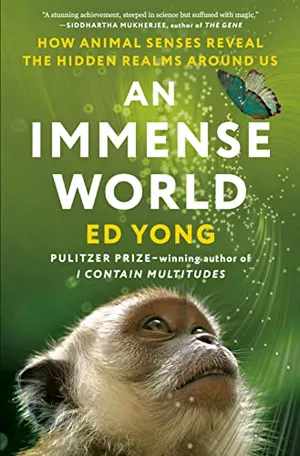
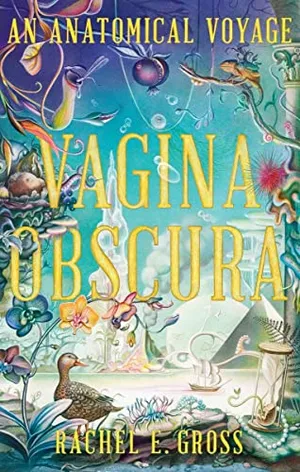
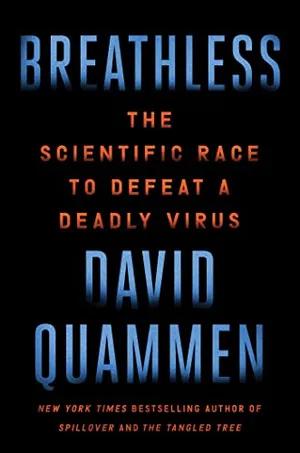
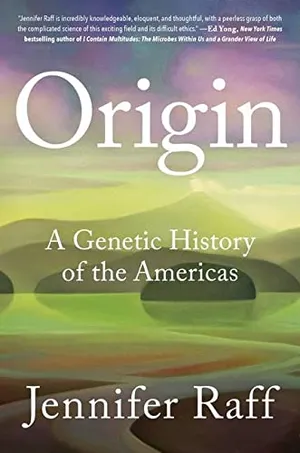
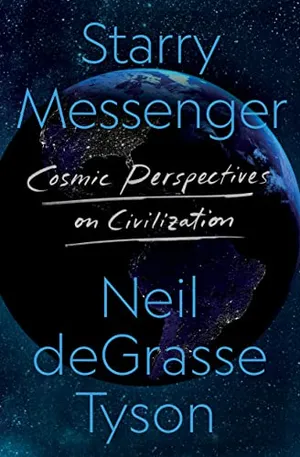
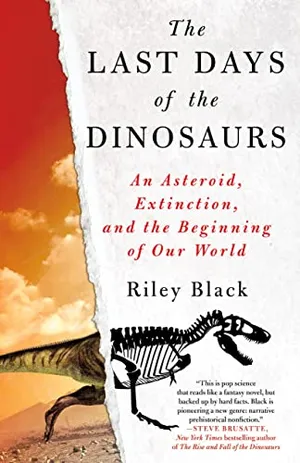
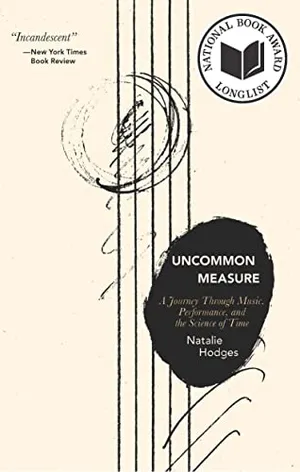
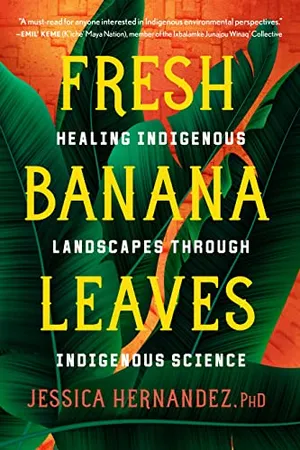
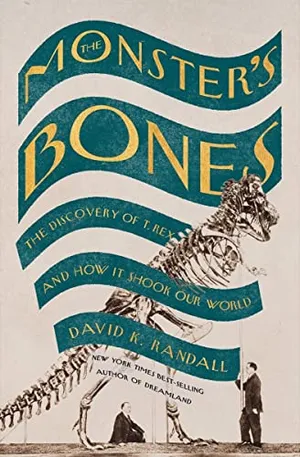
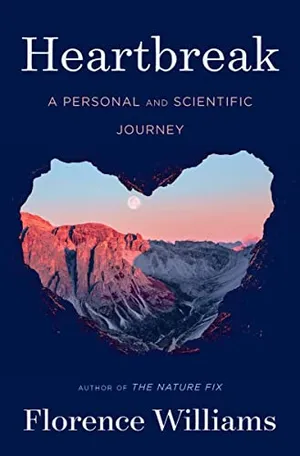
/https://tf-cmsv2-smithsonianmag-media.s3.amazonaws.com/accounts/headshot/RileyBlack.png)
/https://tf-cmsv2-smithsonianmag-media.s3.amazonaws.com/accounts/headshot/kim.png)